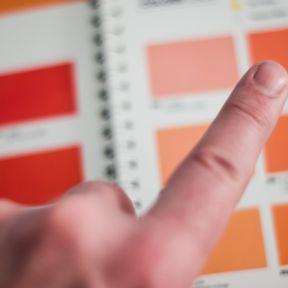In recent years, there has been substantial discussion of bias in science, and the conflicts that it can elicit. Bias can include the biases to which we are susceptible as individuals and the systemic biases that are embedded in the structures that support our work. I revisit the issue of bias, about which I have previously written, to consider five ways that we are susceptible to it, as relevant to the work of shaping a new science for health in this post-war moment. I will address first how we, as individuals, can be biased in our work. Then, next week, we will consider the structural biases that influence what we do.
First, the bias toward what we think will best serve our career interests. The work of science depends, in large part, on having the professional status that comes with a strong publication record, institutional support, a good reputation among fellow scientists, and the capacity to attract funding. Accessing these resources means sometimes making choices with an eye toward advancement. It is difficult to work in science without engaging with the reality that a bias toward career interest is a ubiquitous factor in what we do. It is arguably even more so in the age of social media, in which a presence on social media platforms can be a tool for professional advancement, adding fuel to the pursuit of career interests.
Second, we are subject to ideological biases. Our ideological priors are the lens through which we see and process the world around us. It can be difficult to look beyond our ideological biases, to engage with ideas and data that may fall outside the bounds of our worldview. The challenge of ideological bias was clear during the pandemic, as the conversation around the science of addressing COVID became sharply polarized. In some ways, by heightening the issue of ideological bias, the pandemic helped bring it to the surface in a way that now allows us to address it in this post-war moment.
Third, our work can be swayed by network-based biases. Consider the area of epidemiology, where there is a range of subfields, including social epidemiology, nutritional epidemiology, and life-course epidemiology. Within such networks, there can be a strong bias toward research that reinforces certain approaches and priors. An added incentive not to stray from the thinking of one’s network is our simple human desire to be liked. It is uncomfortable to be the odd person out, to take a position that runs counter to the prevailing view. This helps sustain network bias, shaping an incentive structure that can keep our science siloed.
Fourth, our science can be subject to identity bias. We all see the world from our own unique perspective. It is a perspective shaped by our experiences, by the circumstances of our lives. Each person’s life is different; what is central to the experience of one person could be entirely outside the experience of another. This can constitute a form of bias. We make choices based on what we know, leaning heavily on our life experiences and those of people like us. At its most pernicious level, this bias can lead to seeing the world through racist or sexist lenses, where we privilege perspectives that advance only those who share core personal identities with us. But our identities are many and extend well beyond core demographics.
For example, at the start of the COVID pandemic, it is possible that we in the academic world were quicker to support working from home and slower to support a return to in-person work because many of us have jobs that are conducive to remote work. Had this not been the case, we might have taken a more nuanced view of the policy. This bias underscores the critical importance of diversity—diversity of identity and of viewpoints—in what we do, something I have written about before. The more diverse our spaces, the more perspectives represented, and the better we can see beyond identity bias, to shape an approach that is informed by a full range of experiences and inputs.
Finally, just as we can be biased in favor of our in-group, we can also be biased against those who are not like us. In this polarized moment, this bias has become a defining feature of our culture and politics. There are many who support Donald Trump mainly because he frightens and angers those they do not like. And there are many who reject the premise that anyone who supported Trump could ever have a good idea about anything else, or that anything the former president says could have a grain of truth to it.
As much as we may wish our politics to be dominated by sober, fact-based consideration of important issues, it is difficult to deny, after living through the last decade, that bias against the out-group has been a key driver of much of our political behavior. This has been detrimental to our science, for our work to promote the health of the public. Our work depends on what this political climate has crowded out—the reasoned pursuit of data and open lines of communication about ideas. Bias against others threatens this process, at both the individual and collective level.
To be clear, I am not calling attention to these biases because I think they can be fully avoided. The idea is not to eliminate bias, but to moderate it, to control for it in our pursuit of truth. We can do this as individuals by being more aware of our biases, and more self-reflective about what we say and do. I will next week address how we can do this at the level of systems, to help our institutions avoid the pitfalls of bias and shape a stronger foundation for the future of public health.


